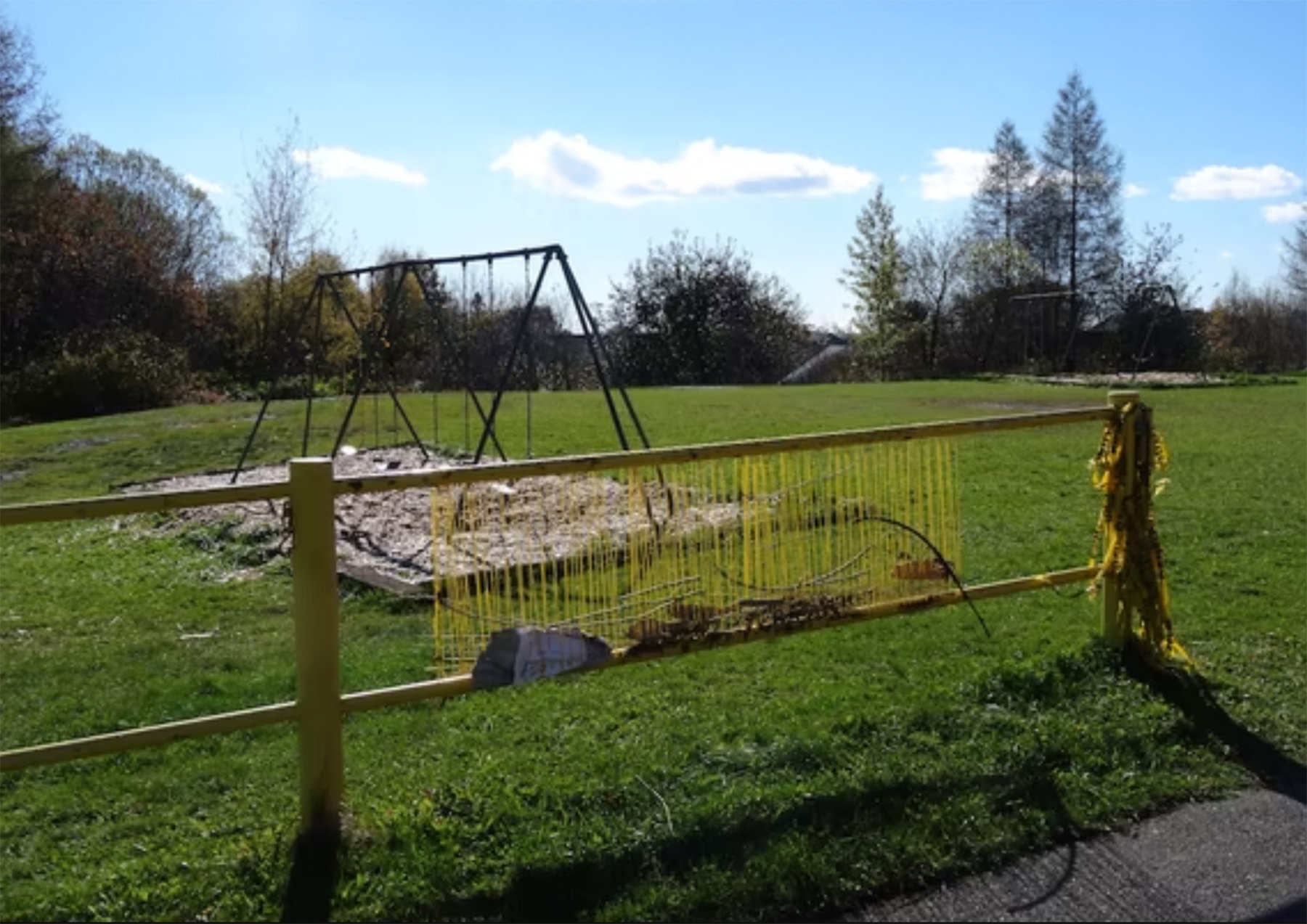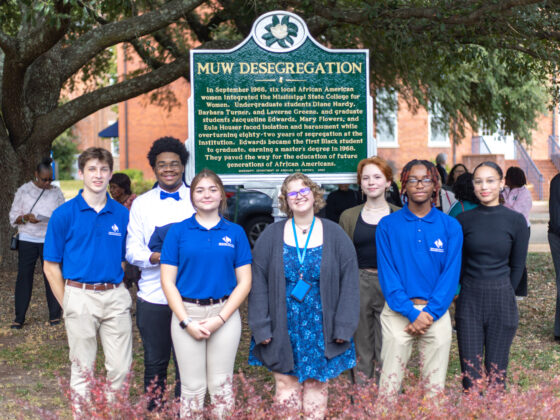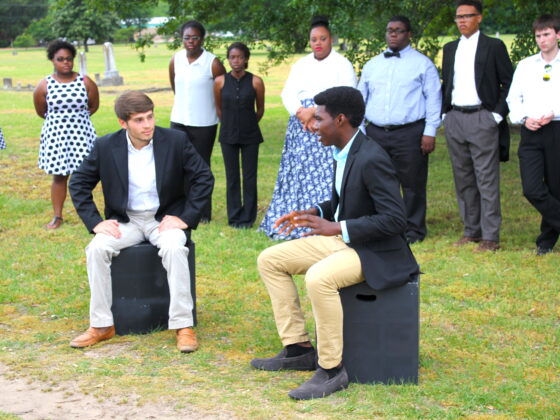Shead High School, home of the Tigers, sits on a hill in Eastport, Maine, just a short walk from everything else in town. I went to visit, curious about what a small public school in very rural, maritime Maine, with a total of 110 students, would be like.

Shead is built-for-winter, but bright and efficient. Its big front doors open into a large entry area, which doubles as a lunchroom, which then opens onto an elegant high-raftered gym. At lunchtime, tables were set up and the space was bustling in anticipation of sports events and Halloween.
Despite its small size, Shead fields teams in soccer, basketball, cross country, a host of other sports, and has its own radio station. One advantage of being such small school, people say, is that kids can play every sport they would like to. The gym is festooned with banners of championships, hanging next to a big flag from the Passamaquoddy tribe.
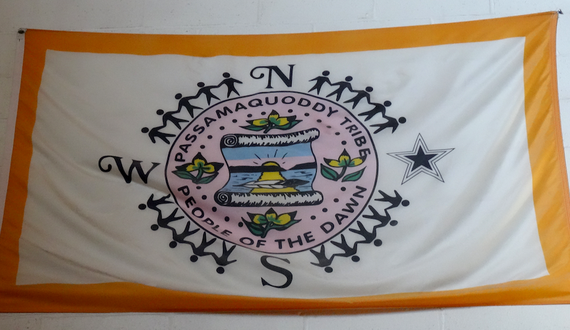
Shead is a regional school; only about 20 of the students are actually residents of Eastport, and the rest are bussed in from about a half dozen neighboring communities that don’t have high schools themselves. About 1/3 of the students are Native Americans from the nearby Passamaquoddy reservation, called Pleasant Point. These nonresident students bring critical revenue to Eastport, which supports not only the school’s livelihood but also enough for extras, like teachers for P.E. and music. About 60% of the kids qualify for free or reduced lunch (a proxy for poverty level in the US).
The town itself worries about a shrinking and aging population. The census of 2010 shows 1331 people in Eastport, with a median age of 54 years, a 19% drop in population and 9 year rise in median age from 2000. Shead reflects those numbers. Twenty years ago, there were 181 students enrolled at Shead; ten years ago there were 157; versus today’s 110. The photos of the Shead graduating classes, which hang along one wall of the school, tell the vivid story: the class of 1988 had 46 students; 1998 had 35; the class of 2014 has 25 students, 3 of whom are from Eastport.
Shead class of 1988:
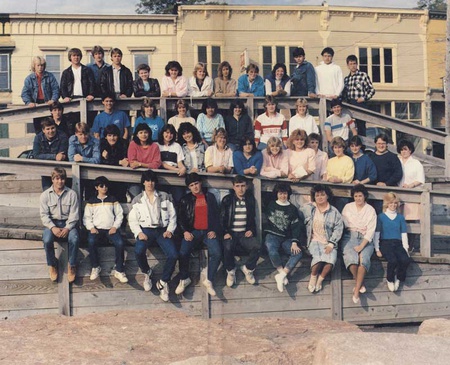
Shead class of 2008:
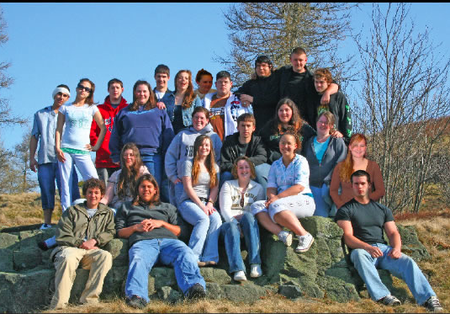
Right across the street from Shead is the even tinier Eastport elementary school, which enrolls about 90 students in K through 8, all Eastport residents. The principal of the elementary school told me that several families had moved into town recently, two of them with five kids apiece, which is considered promising news.
(Elementary school playground, with art project.)
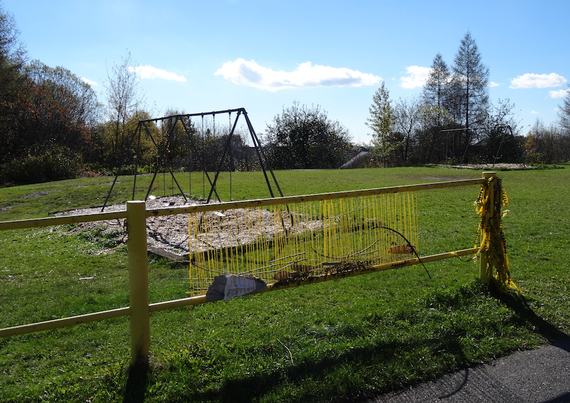
I heard repeatedly about ways that Shead’s smallness can turn to advantage. Teachers and counselors can pay attention to each individual student. No one gets “lost in the sauce”, as they described it. Small numbers also means small class size, as few as 4 or as many as 15. I saw plenty of signs that no one could fly under the radar at Shead, even if he or she wanted to. While I was reporting in to the office for my visit, a number of kids passed through; they seemed to be casually checking in or out. An assistant would nod something affirmative, suggesting they knew exactly who each student was and what his business was there.
Also keeping track, in an understated way, was Principal Paul Theriault. Later in the morning, I found him sitting in the middle of the school hallway, right outside his office. He was wedged into a student- size desk, working on his laptop. If you were a student going from one class to the next, chances are you would pass Mr. Theriault along the way.
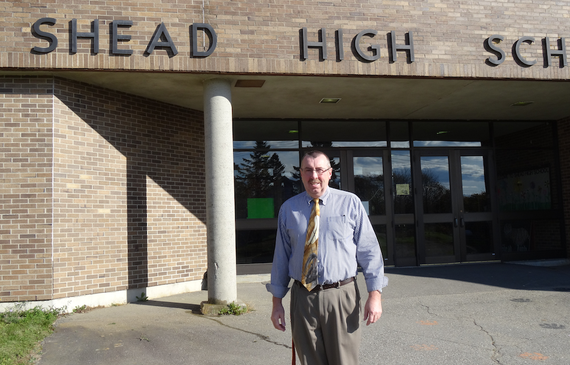
Paul Theriault, who grew up in Eastport, hasn’t always worked in education. He was a meat cutter for 21 years, a solid pay-the-bills profession. He had also coached Eastport basketball at various times since 1985, and then eased into Shead as an educational technician in the Alternative/Special Education program in 1999. By 2003, he had a degree in education, by luck the same year that Shead was hiring a social studies teacher. Theriault got the job, and the part-time vice principal’s job to boot! Four years later, he became principal.
Empathy would be the right word to describe Mr. Theriault’s intense connection to the school, the students, and the old soul of his hometown of Eastport. “I grew up poor,” he said. “there were not a lot of bright colors in your life.” His understanding translates into very specific examples of how he leads the school. Theriault describes an example of how each student needs– and deserves– special handling, sometimes granting dispensation outside the usual norms. Once, he discovered a student was being docked for not handing in his homework. “Homework?” he said. “For crying out loud, some kids have no place to DO homework.” The guidance counselor, Leah McLean, backs up these sentiments and actions. She knows her students and their family lives, which are sometimes complicated. “There are “couch surfers” in this school,” she says.
Understanding the student population means more than tending to the smaller stuff – like massaging the rules about homework. It also means imparting a vision for the school and for each student who goes there. Principal Theriault uses the metaphor of a jigsaw puzzle. The big picture—the cover of the box that you put in front of you — represents the image of where you are aiming– your hopes and aspirations. It is an image to keep in mind as you try to put the small pieces together.
A recent small piece that was a big victory for Shead was winning a 4-year grant from the MELMAC Education Foundation in 2007, and again in 2011. An aside: I heard these word “grant” used many times in talk of development plans for Eastport. In my hometown of Washington DC, grant is not always a strong, positive word; it easily carries connotations of earmarks or handouts or somehow easy money.
Last year’s seniors went in a variety of directions, including the ever-popular University of Maine in nearby Machias, Washington County Community College in nearby Calais, and into the military. One student matriculated at a college in Massachusetts.
So, how do you teach the kids of Shead every day? Damon Weston, the social studies teacher, has thought about this a lot. He grew up in nearby Trescott, graduated from Oberlin College, and returned to Maine to rake blueberries in 2002. He has a lot of family now in Eastport, all pillars of the town. Damon talked about striking a balance in teaching the solid core of his subjects while keeping them relevant to the here and now, and the futures of his students. He is on the front lines of one of the town’s most serious worries: how to prepare and convince its young people to stay, work, and live in Eastport. His students are the generation that will carry forward the economic and spiritual rebuilding of the town, which is moving with such gusto now.
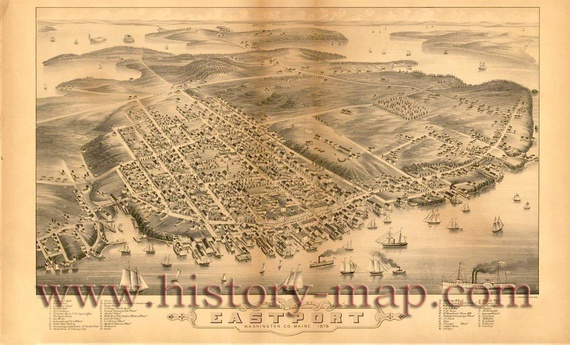
We soon got sidetracked into talking about the course that Weston developed on the history of Eastport. What could be better! He has old maps, old photos, old illustrations of where the train tracks used to run from inland to the water’s edge, old stories about how the Roosevelts came with their brood by train to Eastport en route to their summers across the channel in Campobello. On the streets of Eastport, I had heard stories of how Eleanor used to come shopping and stop to chat with the shopkeeper and the ladies. His course sounded perfect to me—history right in the backyard of where his students live. (Above, from History Map.)
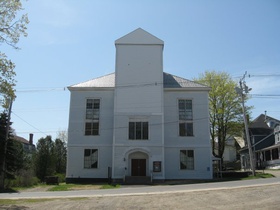
Damon Weston found a way to connect his students to the history of the town. English teacher Ben Brigham has found a way to connect his students to the current events of the town. They are reading The Glass Menagerie, which was currently being performed at Eastport Arts Center, in a restored building just down the street (at right). Students could attend the play for free.
The teachers, administrators, parents in Eastport schools, as well as the others in the town who lead, perform, volunteer, serve, and build, (and many simultaneously; how else could a town of 1300 people work?) all work to embed the schools into the connective tissue of Eastport. Successful artists from the thriving local community volunteer at the schools; gardeners, farmers and activists in the local food movements help build raised beds to grow produce at the school grounds; others teach the kids how to professionally care for their bicycles; the announcer of The Glass Menagerie applauds the audience for their presence, and then challenges them to buy tickets for their friends; students and parents play in the town orchestra together; the editors of the newspaper take tickets at the theater. All this creative, aggressive activity defines the spirit and goals of Eastport right now.

